#roman terracotta
Text


Male Head from a Pediment Statue, perhaps of Dionysus/Bacchus; late 4th - early 3rd c BCE, terracotta | Found in the Auguratorium on the Palatine hill | Held in the Palatine Museum
#ancient art#unfortunately unknown if roman or greek or even etruscan#roman art#ancient greek art#etruscan art#?#roman terracotta#auguratorium#palatine museum#roman relief#dionysus
138 notes
·
View notes
Photo

Terracotta containers
Roman
Unterlinden Museum - Colmar
Alsace/France
photo cjmn
22 notes
·
View notes
Text



~ Lamp.
Date: A.D. 1st century
Place of origin: Knidos, Turkey (?)
Culture: Roman
Medium: Terracotta
#getty#ancient#ancient art#history#museum#archeology#ancient sculpture#roman#ancient history#archaeology#lamp#knidos#turkey#terracotta#1st century
668 notes
·
View notes
Text

Isis-Aphrodite
* 2nd century BCE - 1st century CE
* terracotta
* Turin Egyptian museum
Turin, June 2023
#Isis-Aphrodite#goddess#Ptolemaic Egypt#Roman Egypt#ancient#terracotta#statue#ancient colours#art#Isis#Aphrodite#Turin Egyptian Museum#my photo
483 notes
·
View notes
Photo
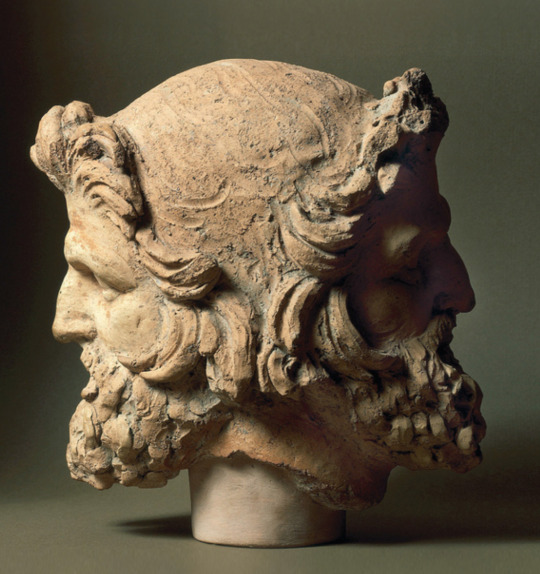
Janus, terracota
1K notes
·
View notes
Text

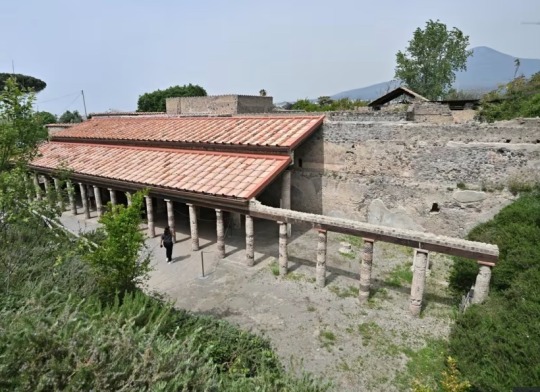
‘Ancient Roman’ Solar Roof Tiles Power Pompeii Villa
Ancient Roman ruins at Pompeii have been fitted with invisible solar panels, in a move that will contribute to the archaeological site’s sustainability efforts and cut costs. The innovative panels, which blend into the background by imitating traditional materials, were installed on the House of Cerere, on a thermopolium — a Roman snack bar — and on the House of the Vettii, which recently reopened following 20 years of restoration work.
“They look exactly like the terracotta tiles used by the Romans, but they produce the electricity that we need to light the frescoes,” said Gabriel Zuchtriegel, the director of the archaeological park of Pompeii, in a press release.
Each year, 3.5 million tourists explore the vast ruins of the ancient Roman city, which was buried by the eruption of Mount Vesuvius in 79 AD. But due to Pompeii’s size, energy bills are expensive and conventional methods of providing power across the site can threaten its appearance.

“Pompeii is an ancient city which in some spots is fully preserved,” Zuchtriegel said. “Since we needed an extensive lighting system, we could either keep consuming energy, leaving poles and cables around and disfiguring the landscape, or choose to respect it and save millions of euros.” The new technology will help the archaeological site to cut energy bills and make it more enjoyable, he added.
The invisible solar panels — or “traditional PV tiles” as they are technically known — were created by the Italian company Dyaqua. They can be designed to appear like stone, wood, concrete or brick, and hidden on walls, floors and roofs, according to Elisabetta Quagliato, whose family owns Dyaqua, in the press statement.
“We are an archaeological site but we also want to be a real-life lab for sustainability and the valorization of intangible heritage,” Zuchtriegel said. “Our initiative is not merely symbolic. Through the million tourists who visit us every year, we want to send a message to the world: cultural heritage can be managed differently and in a more sustainable way.”


Other locations in Italy using the invisible solar technology are the commune of Vicoforte in Italy and, soon, Rome’s contemporary art museum Maxxi. Public buildings in Evora, Portugal, and Split, Croatia will also install the panels, according to the press statement.
Pompeii’s recent use of these panels is just the beginning, Zuchtriegel said. “From now on, we will be taking this solution into account for all future renovation and restoration projects.”
By Garry Shaw.

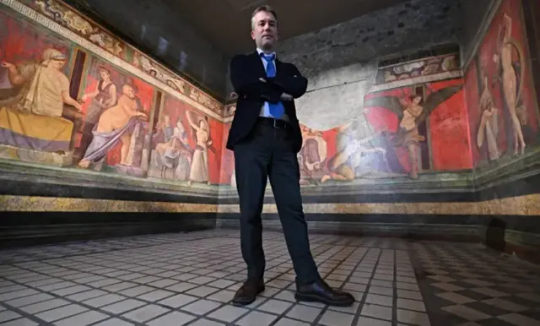
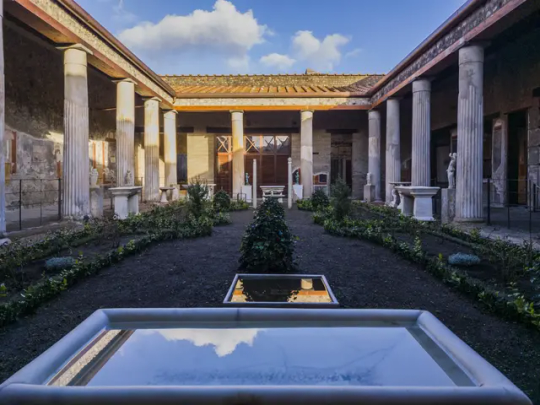
#‘Ancient Roman’ Solar Roof Tiles Power Pompeii Villa#House of Cerere#House of the Vettii#thermopolium#terracotta tiles#solar power#frescoes#mount vesuvius#ancient artifacts#archeology#archeolgst#history#history news#ancient history#ancient culture#ancient civilizations#roman history#roman empire#roman art
73 notes
·
View notes
Text
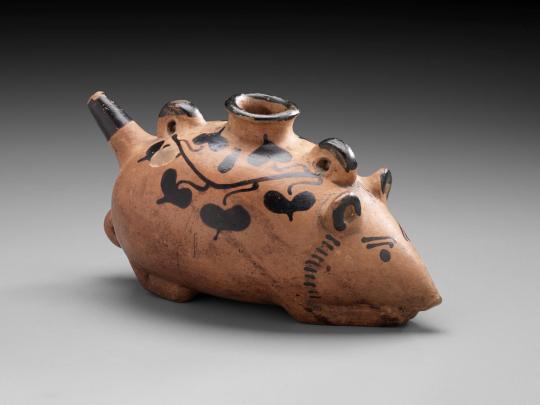
Terracotta vase in the form of a mouse (Mid-5th century BC),
Clay vase from Italy, Sicily.
H. 3 11/16 in. (9.4 cm)
L. 6 13/16 in. (17.3 cm)
The mouse crouches with its front paws under its chin and its tail curled up beneath itself. The mouth of the vessel, in the center of the back, is flanked in front and back by a pair of stringholes. A narrow, tapering spout emerges at a 45-degree angle between the rear stringhole and the tail. A black ivy vine is painted on the back as though it were running through the holes. The ears, eyes, eyebrows, and neck fringe are also painted black, as are the tops of the mouth, spout, and stringholes.
Clay mice of this type have been convincingly identified as Sicilian by Heldring.
from Museum of Fine Arts Boston
#roman art#ancient art#ancient artifacts#terracotta#antiquities#antiquity#art history#clay art#mouse#museum of fine arts
58 notes
·
View notes
Photo
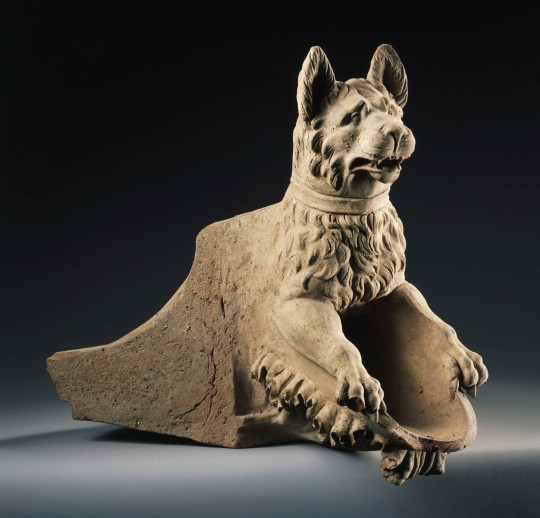
Waterspout in the form of a hound, early 1st century CE, Roman,
Terracotta
Courtesy of the Princeton University Art Museum
254 notes
·
View notes
Photo
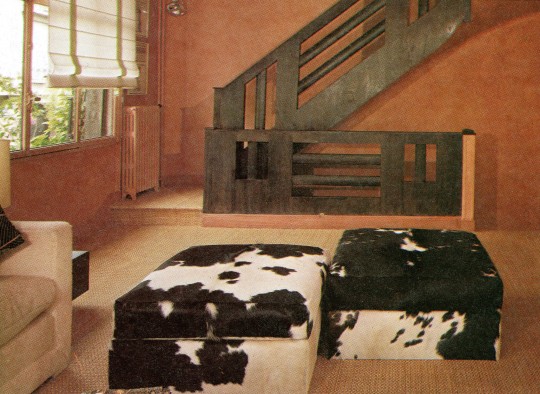
In this carefully-planned entrance hall, interesting contrasts of texture all link up. The closely woven coir matting blends in with the terracotta painted walls, the silky, skin-covered upholstered stools tone with the dark, chunky, wooden bannisters, and the thick weave of the sofa looks good against the smooth cotton of the Roman shade.
The Decorating Book, 1981
#vintage#vintage interior#1980s#interior design#home decor#entryway#foyer#cowhide#ottoman#coir#mat#terracotta#wall paint#bannister#Roman shade#contemporary#Southwest#desert#style#home
227 notes
·
View notes
Text

Ancient Roman terracotta oil-lamp depicting the fearsome sea monster Scylla. Artist unknown; 2nd century CE. Now in the Staatliche Antikensammlungen, Munich. Photo credit: Marcus Cyron.
#classics#tagamemnon#Ancient Rome#Roman Empire#classical mythology#Scylla#art#art history#ancient art#Roman art#Ancient Roman art#Roman Imperial art#lamp#terracotta#oil lamp#Staatliche Antikensammlungen
469 notes
·
View notes
Text

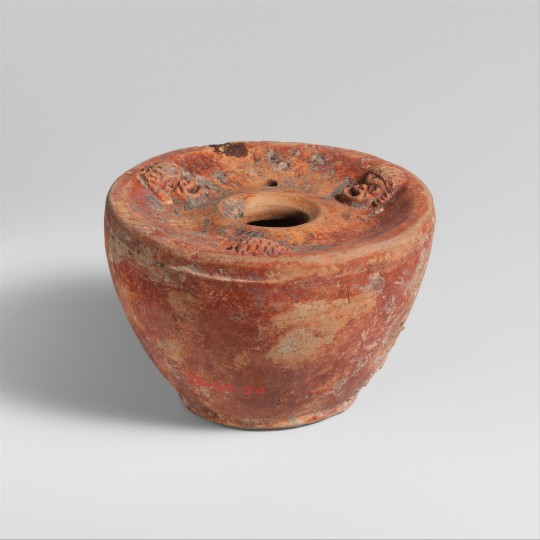
Terracotta inkwell and bronze stylus. Roman 1st‒2nd century CE. x
The inkwell is decorated with three theatrical masks in relief on the upper face. It was found together with the stylus (26.60.35).
72 notes
·
View notes
Text
truly love building in the sims to force myself out of my comfort zone only to rationalise myself back into it “because it’s on theme” (its not!)
#honestly not that hard of a shift#started with modern greco roman#ended up solid mediterranean coastal#the difference is blue#and a distinct lack of terracotta and overall masonry#i blame the dining room for putting me on my blue spree🙄#personal#sims4machine
4 notes
·
View notes
Text
however speaking of Visual Catos someday i will make a post about how really normal i am about the bronze bust of cato
#the one thats my icon on both my blogs...#its another roman art piece that drives me crazy insane like the terracotta one#its mostly the expression on it tbh its SO. its so#however i havent been able to find much info about it with a cursory glance so ill have to research it 1st
2 notes
·
View notes
Photo

Two-handled amphora with erotic figure, 5th century BCE
Museo Civico al Castello Ursino - Catania, Sicily
Photo by Charles Reeza
5 notes
·
View notes
Text

Attis
Egypt, Roman period
terracotta
Egyptian museum, Turin
Turin, June 2023
#Attis#figurine#terracotta#ancient#Roman#art#mythology#Roman Egypt#Turin Egyptian museum#my photo#clothing
78 notes
·
View notes
Photo

^Bull figurine
Cyprus, 500BC
rayeshistory.com
2 notes
·
View notes